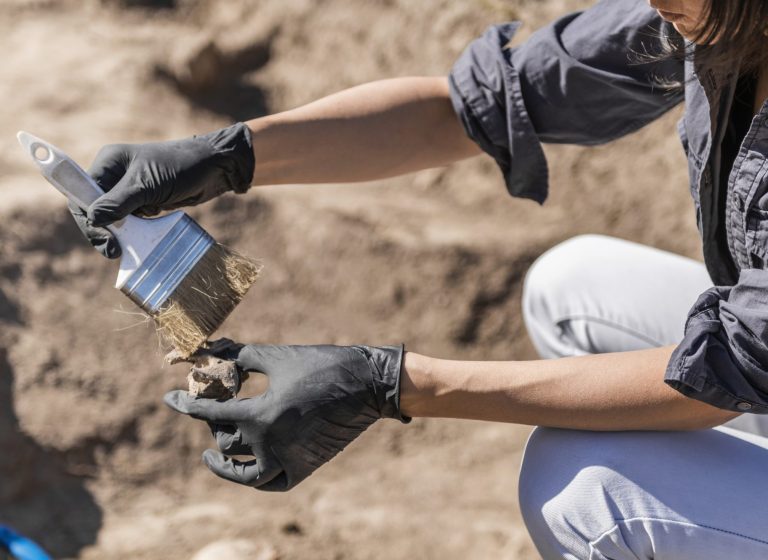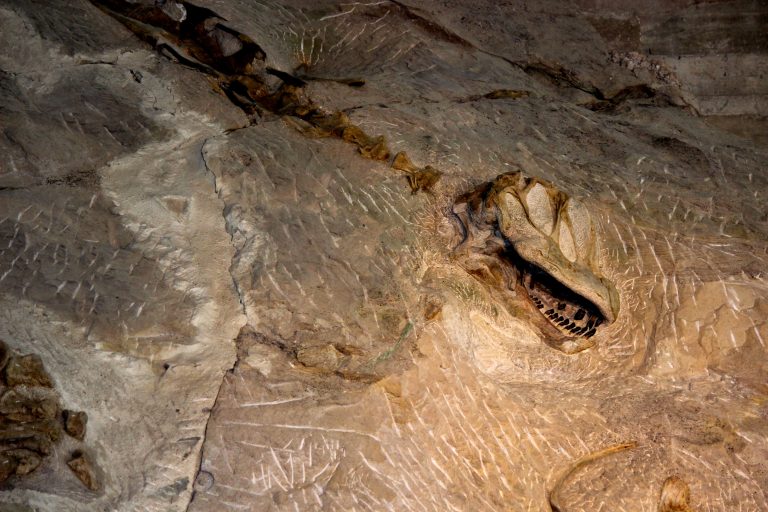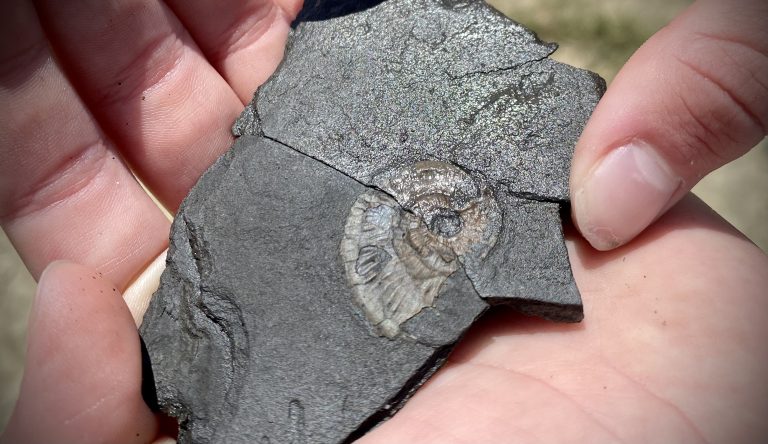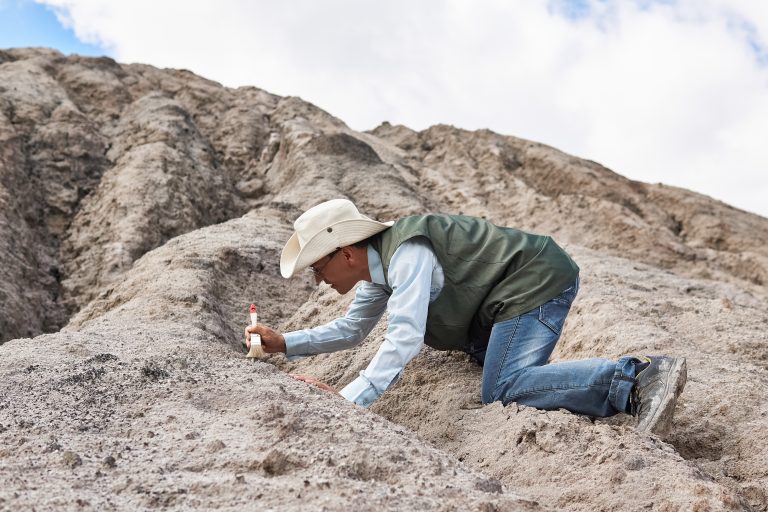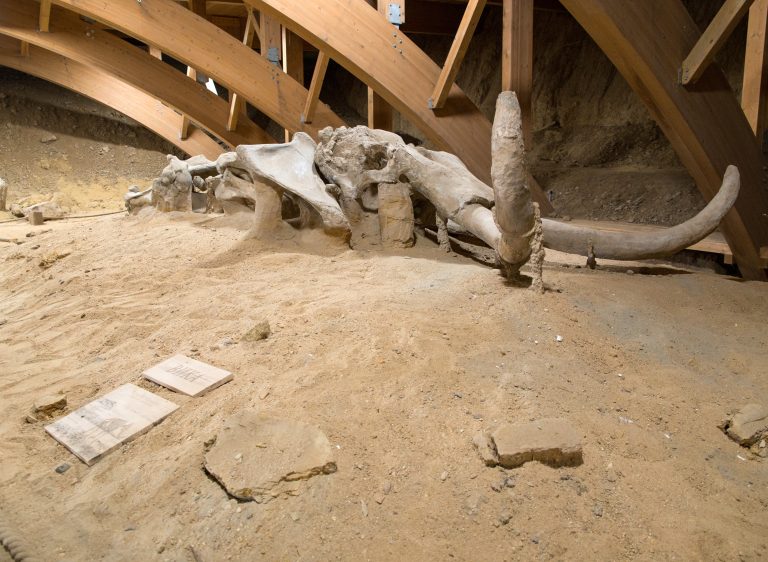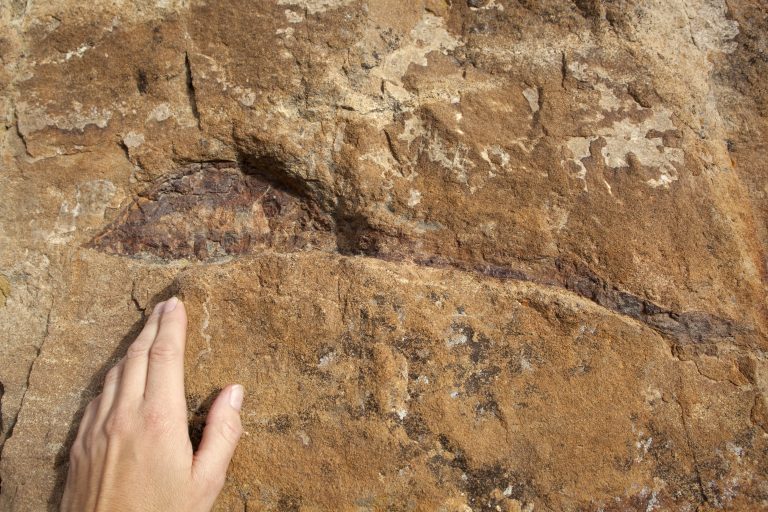5 Essential Dinosaur Site Photo Etiquette Tips
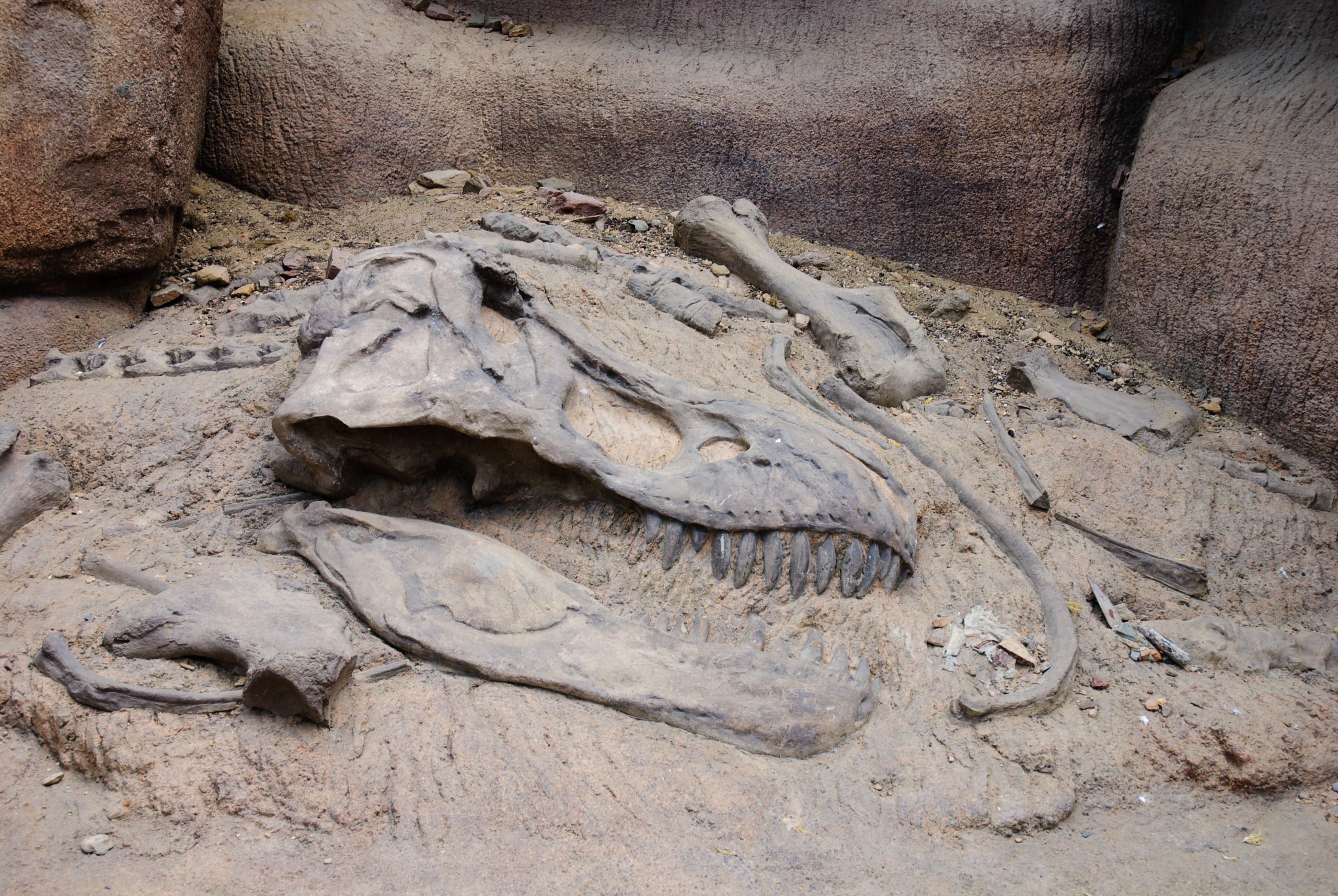
Imagine standing in the shadow of ancient giants, camera in hand, ready to capture the echoes of prehistoric life. As a seasoned paleontological travel writer, I’ve learned that snapping the perfect shot comes with a responsibility to respect these timeless sites.
1. Respect Boundaries
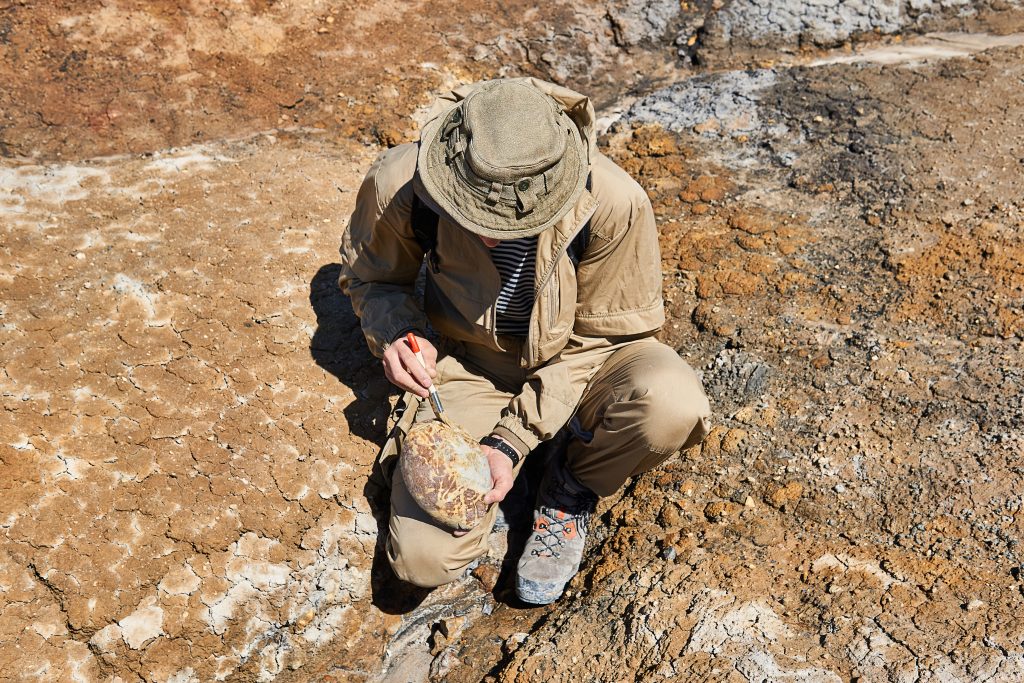
When you’re toe-to-toe with the remnants of the Mesozoic era, it’s tempting to cross lines for that unbeatable angle. But here’s the thing: boundaries are there for a reason. They protect both you and the delicate balance of the site.
I’ve seen folks, in their excitement, hop over a rope only to land in a heap of trouble (and sometimes, in restricted areas). Always keep a respectful distance; these barriers are silent guardians of history’s treasures. Remember, the goal is to preserve the site as you found it, ensuring that future generations can marvel at these wonders just as you have.
2. No Touching Fossils
It’s not just about looking with your eyes—fossils are incredibly fragile. Even the oils from your skin can damage them. I’ll never forget the time I saw someone reach out to touch a dinosaur bone, only to be met with a chorus of gasps from onlookers. The urge can be strong, but resist it.
Hey hey! Don’t forget to subscribe to get our best content 🙂
These fossils have withstood the test of time; let’s not be the generation that crumbles them to dust. Think of it as a museum without walls: you wouldn’t grab the Mona Lisa, so don’t grab a piece of prehistory.
3. Keep Voices Low
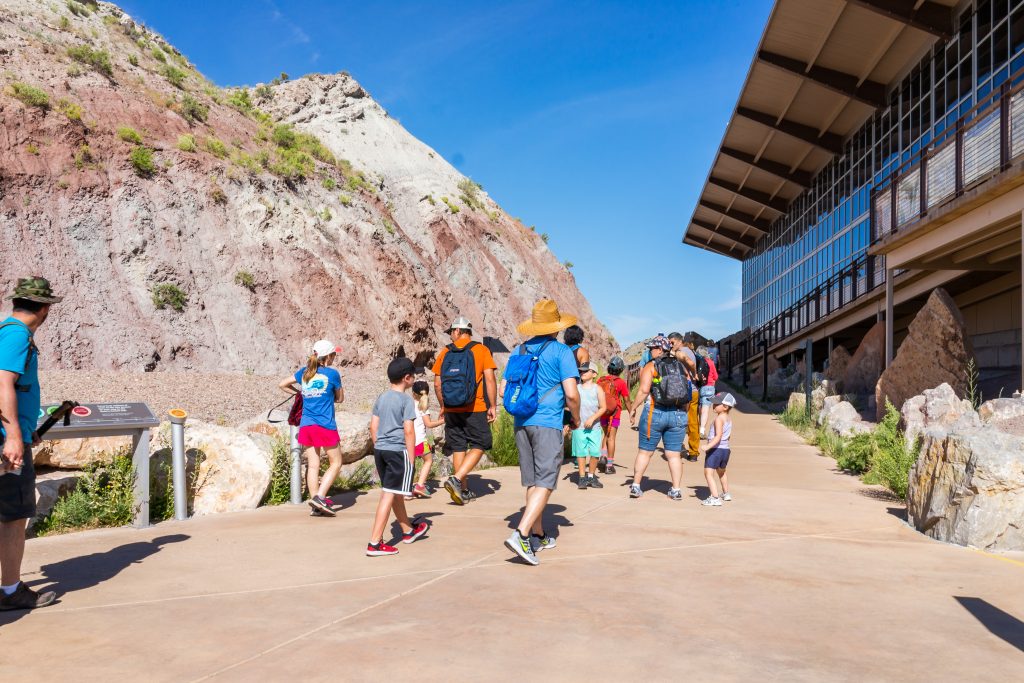
Dinosaur sites are not just tourist attractions; they’re active research areas and places of profound discovery. Picture this: a paleontologist is inches away from uncovering a new species, and your loud excitement startles them—oops, there goes a priceless fossil fragment!
Keep conversations hushed and movements measured. It’s about respect, not just for the researchers but for the ancient quiet of these places. A low whisper here carries the weight of a shout, echoing through time.
4. Follow Pathways
Trails and pathways are more than just convenient routes; they’re carefully planned to minimize human impact. I remember strolling down a marked path and spotting a rare fossil just inches from the trail—had I strayed, I might’ve stepped on a slice of prehistoric life.
Stick to the beaten path; it’s the best way to protect the site and yourself from harm. Plus, these pathways often offer the best vantage points, crafted by experts who know how to showcase the site’s hidden gems.
5. No Flash Photography

Imagine the scene: a perfect dinosaur skeleton, the lighting is just right, and then—flash! You’ve not only blinded your fellow enthusiasts but potentially harmed light-sensitive fossils. The use of flash can accelerate the degradation of these ancient relics.
I’ve seen the disappointment in a photographer’s eyes when they realize their flash has compromised a pristine site. Keep your camera’s flash off. Trust me, the natural lighting in these open-air time capsules is more than enough to capture stunning images.
Understand Site Regulations
Each dinosaur site has its own set of rules, tailored to its unique environment. Before you even pack your camera, do your homework. Some places might allow tripods, while others forbid them to avoid ground disturbance.
I’ve been to sites where specific lenses are recommended to get the best shots without getting too close. Understanding the regulations is not just about following the law; it’s about showing respect for the efforts to conserve these irreplaceable locales.
Protecting Dinosaur Remains
Protecting dinosaur remains isn’t just for the professionals; it’s a visitor’s duty too. By not touching, staying quiet, and sticking to the paths, you’re doing your part. But there’s more to it. If you see someone breaking the rules, a gentle reminder can go a long way.
I’ve found that most people don’t mean to cause harm—they’re just unaware. And if you’re unsure about something, ask. It’s better to question than to accidentally contribute to the degradation of a site.
Interacting with Guides
Guides are the unsung heroes of these prehistoric playgrounds. They have stories that breathe life into the bones and landscapes. Engaging with them can enhance your experience tenfold.
They appreciate when visitors show interest and respect for their knowledge. I once had a guide show me a hidden fossil trackway that I would have missed without his insight. Listen, learn, and let them lead the way—they know these ancient lands like the backs of their hands.
Sharing Space with Others
You’re not the only one eager to witness the grandeur of these ancient beasts. Be mindful of others trying to enjoy and photograph the site. If everyone’s vying for the same spot, take turns. A little patience can prevent a photobombing incident that ends up in someone’s scrapbook.
I’ve made lifelong friends by striking up conversations while waiting for my turn. Sharing space also means sharing experiences, and isn’t that what travel is all about?
Leaving No Trace Behind
The principle of leaving no trace is paramount. Whatever you bring in, make sure it leaves with you. I’ve seen wrappers fluttering in the breeze next to a 150-million-year-old fossil—it’s a sight that would make any dino enthusiast cringe.
Keep snacks sealed, dispose of waste properly, and if you see litter, consider picking it up. Leaving no trace ensures that the only footprints left behind are those of the dinosaurs themselves.
By following these simple tips, you’ll not only capture incredible memories but also help preserve the integrity of these awe-inspiring sites. Remember, every time you visit a dinosaur site, you’re stepping into a chapter of Earth’s story—let’s make sure it can be retold for eons to come.

